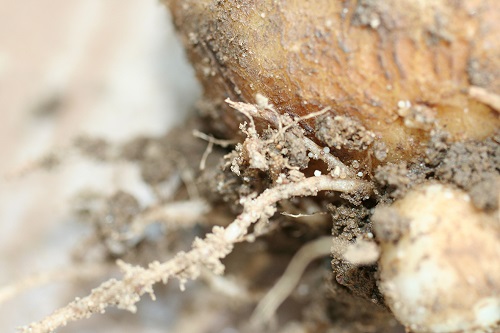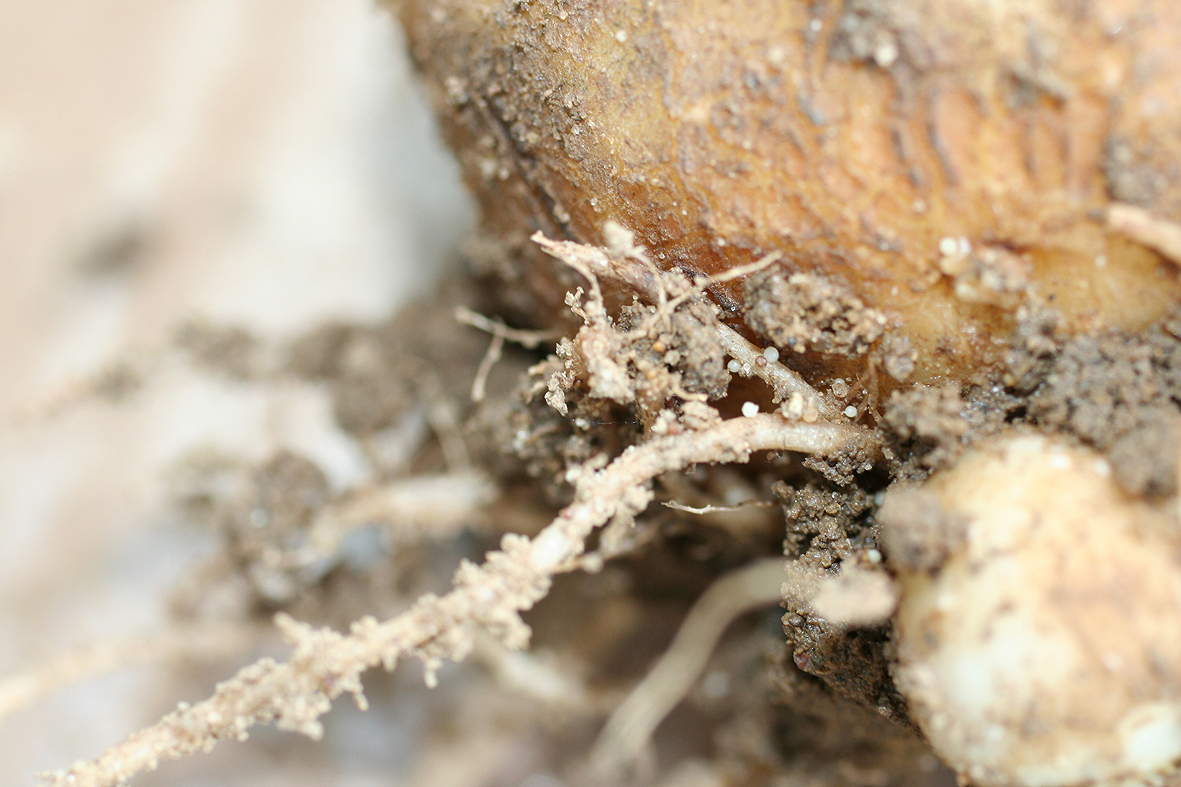 Research is underway that will refine a tool to help growers manage PCN more effectively. CPM finds out more about it.
Research is underway that will refine a tool to help growers manage PCN more effectively. CPM finds out more about it.
If we can identify varieties with reliable tolerance, this would be very useful information.
By Lucy de la Pasture
Potato cyst nematodes (PCN) are on the radar of every potato grower but managing the pest is no simple task, with control outcomes uncertain. According to AHDB estimates, the pest currently causes annual losses of £26m, which could rise to an estimated £50m if nematicides become unavailable.
AHDB has formed a consortium to “refresh” the PCN best practice guide and several research projects are ongoing and will provide important input for that effort. One of the projects underway, funded by the Sustainable Agriculture Research and Innovation Club (SARIC), is carrying out work that will enable the AHDB’s PCN calculator to be updated and refined into a decision-support tool.
PCN Calculator
“The PCN calculator was developed over 10 years ago as an educational tool based on data from field trials. It allows growers to look at different scenarios and how these may impact PCN populations and yield,” explains AHDB crop protection senior scientist, Dr Sue Cowgill.
“The feedback we’ve had is that it needs updating, as new varieties come through, and improving, so it provides information on the effect variety resistance and tolerance have on PCN multiplication.”
Sue explains that the genetic resistance of a variety to PCN has an impact on multiplication of the pest, whereas variety tolerance is a reflection of its ability to yield in spite of pest damage and attack.
“Data for resistance is available from National List trials but information regarding variety tolerance is more difficult to discover. In AHDB-funded trials, varieties have exhibited different tolerance levels in different sites so it’s a trait we need to understand better,” she says.
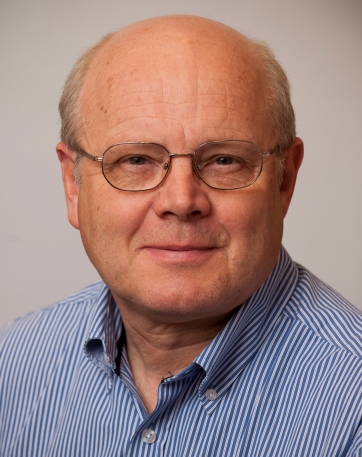
Howard Atkinson explains there are at least three different mitotypes of G. pallida in the UK and it’s possible these may differ in their decline rates.
Prof Howard Atkinson at the University of Leeds, is one of the group of academics charged with researching the basis for turning the PCN calculator into a decision-support tool (DSS).
“If we want to convert a useful educational tool into a robust and practical DSS then a number of changes and developments would add value. As the PCN calculator stands, the grower plugs in parameters and the model shows how the PCN population and yield may change over time. The trouble is these parameters don’t describe all the factors that affect PCN populations and yield loss adequately,” he explains.
“Population estimates aren’t accurate, variety tolerance is uncertain, there are more resistance ratings for varieties than useful and there’s no information on the decline rate of PCN in particular fields.”
Sampling for PCN is notoriously difficult due to its patchy distribution within fields. If the true field average is one cyst or less per sample then it’s likely it won’t be detected. “Population estimates for PCN always report ‘no cysts detected’ rather than their absence. Reported values can give rise to false confidence when judging the economics of treatment, especially when populations are at a low or moderate level.
“Just one recovered cyst in a soil sample may represent up to 3 eggs/g soil so reported estimates below about 10-20 eggs/g in the field may be provided by few cysts in a sample and may not be precise,” he notes.
“Tolerance is affected by environment as well as genotype and there’s not enough precision in the model to reflect that the environment is very variable.”
Currently varieties are classified into four groups of tolerance; very tolerant, tolerant, intolerant and very intolerant. Howard points out that these categories aren’t robust because of the variation in tolerance some varieties exhibit between sites.
“As part of the project, we’re looking at recategorising the tolerance into three groups and sub-dividing tolerant and intolerant according to their reliability under different environmental conditions. If we can identify varieties with reliable tolerance, this would be very useful information,” he explains.
Examining population decline and how this may be affected by climate change is a fascinating part of the project, with likely implications on the status quo of Globodera pallida and G. rostochiensis in the population.
“G. pallida is believed to have originated from a higher altitude range in the Andes than G. rostochiensis but is not as well adapted to warmer soil temperatures and may struggle if soil temperatures get warmer,” notes Howard.
G. rostochiensis prefers soil temperatures in the range 17-22⁰C for its multiplication on potato. In contrast, G. pallida egg production begins to decline above a much cooler soil temperature of 15⁰C.
“We believe that if soils get warmer, the balance of PCN populations in Scotland won’t be affected but in East Anglia there may be a change in their relative abundance where cultivars susceptible to G. rostochiensis are grown. But we don’t know how quickly G. pallida populations would adapt and the long-term consequence of climate change is currently undecided.”
Sue adds that a second generation of G. rostochiensis has already been identified in the UK, indicating that the lifecycle is being completed faster. “It’s important to establish how frequently females in a population complete a second generation as this could also have an effect on population dynamics.”
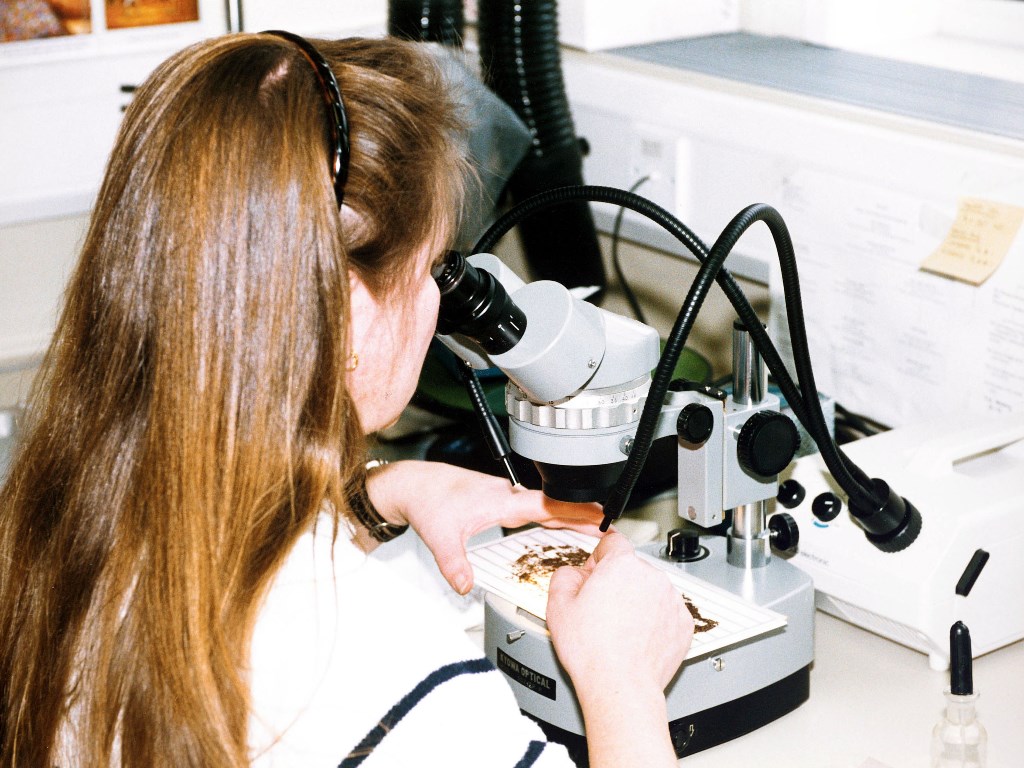
The rate of decline of PCN populations can be calculated by measuring the ‘fullness’ of PCN cysts and establishing how many years have passed since potatoes were last grown in the field.
The rate of PCN decline matters because it affects the length of rotation, explains Howard. “Decline rates of 33% per year may require a six-year rotation if this is the only management tool, whereas at a lower decline rate of 15% per year, a rotation of 14 years is necessary.”
Decline rate can be determined by measuring the size of cysts before the eggs within them are counted. “A female PCN feeds on roots and fills her body with eggs, so bigger cysts contain more eggs. By measuring the size of cysts before counting the eggs, it’s possible to estimate the lost eggs and so work out the rate of decline if the number of years since a potato crop was last grown is known.”
Different mitotypes
As part of the project, work is being carried out by Dr Matthew Back at Harper Adams University which is looking at the different mitotypes (differences in the mitochondria) in G. pallida, explains Howard.
“There are at least three different mitotypes of G. pallida in the UK. Just possibly, mitotypes may differ in decline rates providing a basis for defining such values” he adds.
Variety choice is so market driven in potatoes that other varietal characteristics tend to dominate over its resistance to PCN. Most varieties (95%) lack useful resistance to G. pallida, he notes.
In common with NL ratings for other characteristics, resistance is scored from 1-9 but Howard believes there may be more categories than practically useful. For the purposes of the model this may need to be revised.
“Most varieties are rated as 2 for resistance. Resistance levels of 5 and above are useful, but below that there’s limited value,” he explains.
A further branch of the project will investigate the consequence of imposing a pre-planting mortality by application of nematicides, biofumigation and trap-cropping.
Howard hopes the researchers will be in a position to begin to talk to some large potato growers about the project by early next summer. “It’s important to sense check with growers and to identify if there are any other factors that would be useful to include in the model,” he adds.
Several other projects are underway that may also generate useful data to feed into the model, believes Sue.
“We’re looking at biofumigation to generate some more independent information on the subject. It’s something some growers are pursuing actively, but others are finding it challenging to integrate with their other farming activities.
“A PhD is nearing completion that has conducted research to characterise the PCN population, updating previous survey work on the distribution of the two species. It also looks at PCN egg viability using molecular tools to type PCN based on genetic data and relate this to their ability to overcome resistance,” she explains.
“Two further PhDs are looking at breeding for resistance, an area AHDB believes it’s really important to support. They are attempting to understand better the defence response of the potato when PCN attack it, identify which genes are responsible in both the plant and the nematode and find effector molecules so that they can screen potato varieties for resistance.”
A fellowship in nematology is also underway, explains Sue. “PCN is a major focus and we need to make sure that we have succession planning in place and have new experts coming through academia.”
New model will aid decisions
Dr Andy Barker, director of Barworth Agriculture, is one of the SARIC consortium helping steer the research programme to make sure it stays relevant to the needs of the industry. He has a strong background in nematology and research, with a career that started at Rothamsted in 1994, as well as potato agronomy.
When it comes to PCN management on farm, in Andy’s experience there’s a huge variability in practice. “I still come across people who aren’t sampling for PCN on a per ha basis. On the other side of the coin, some growers are managing their PCN problems really well,” he comments.
“Generally there’s a better awareness of alternative practices for PCN control but the economics of growing the crops sometimes means corners are cut and then fingers get burned,” he adds. And it’s in these circumstances, where financial considerations override crop agronomy, that Andy believes the revised model will be worth its weight in gold.
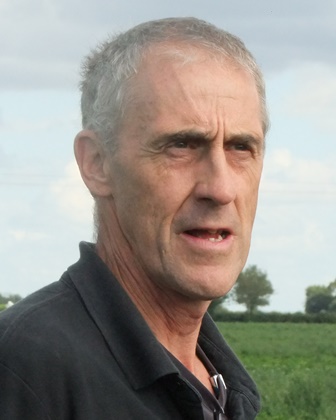
Andy Barker believes the revised model will be widely adopted to help growers work through the financial implications of alternative PCN control strategies.
“Because there are incidences where the recommended approach to managing PCN populations is ignored, forgotten or put aside, having a model will bring home what’ll happen under a proposed strategy. This information will then mean managers can work through the financials for different approaches before making a decision based solely on cost,” he says.
While Andy sympathises with the temptation not to apply nematicides when egg counts are low, he reminds that this is exactly the time to be applying them. “PCN has the highest potential for multiplication at low egg counts, while populations become self-limiting at higher counts. It’s something that growers understand and appreciate but can still ignore because of the pressure to save on costs.”
Another situation where Andy urges caution is where PCN samples return as ‘not found’. “Where PCN is known to exist on a farm where potato growing is well established, I’d view any not found counts as highly suspicious. It’s more likely populations are present at low levels and have been missed in the sampling process,” he adds.
Andy is well known for his expertise in the alternative strategies for PCN management using biofumigant and trap crops and the new model will help growers assess their benefits. He believes it’s important to be realistic about potential difficulties if these practices are to be successfully adopted.
“Adoption of biofumigant crops has been an uphill struggle but it’s becoming standard practice on some farms and I believe it’s an area that will continue to move on. There are problems with the practicalities of growing an extra crop and the cost associated with it, but it brings benefits in addition to PCN control by acting as a green manure and suppression of other soil-borne diseases, including rhizoctonia,” he comments.
Research round-up
The SARIC-funded Project ‘Development of a PCN population advisory tool that provides robust advice and management’ will provide a basis to update the AHDB PCN calculator to a decision support system. This will be done in conjunction with a series of co-ordinated PCN projects.
AHDB Project No 114R476 PCN runs from Mar 2014 – Oct 2017 and is investigating biofumigation at a cost of £250,719 at Harper Adams University (HAU)
AHDB Project 11120020 PhD: Characterisation of Potato Cyst Nematode Populations in Great Britain for sustainable crop management runs from Oct 2013 – Sept 2018 at a cost of £67,650 at HAU.
AHDB Project No 11120021, PhD: Pyramiding resistances to potato cyst nematodes to produce potato cultivars with durable and broad-spectrum resistance’ runs from Oct 2014 – Sept 2018 at a cost of £95,000 at James Hutton Institute (JHI).
AHDB Project No 11120019 PhD: Identification of avirulence genes in Globodera pallida as tools for assessing durability of resistance runs from Oct 2015 – Sept 2018 at a cost of £68,577 at JHI.
AHDB Project No 11120017 Fellowship: Development of a Succession Potato Nematologist runs from Oct 2015 – Sept 2018 at a cost of £219,343 at SASA.
AHDB Project No 11120026 Evaluation of a method to assess varietal tolerance to potato cyst nematode runs from Jul 2016 – Jun 2018 at a cost of £60,397 at National Institute of Agricultural Botany (NIAB).

